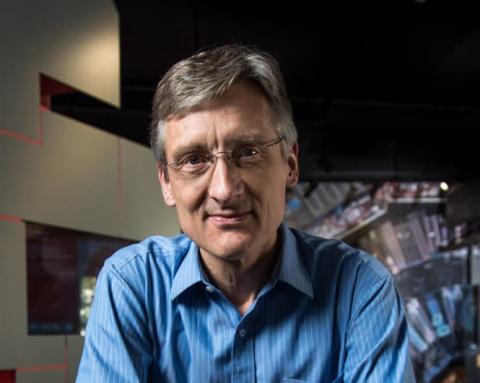My congratulations go to the organisers of EPS-HEP 2017, which took place in Venice last week. It was an excellent conference, covering a great range of topics with a programme that led to one clear conclusion: the various disciplines that make up fundamental physics are coming closer and closer together. Particle physics, astrophysics and cosmology have always asked very similar questions about the origin of the universe. Today, they are becoming increasingly linked, providing complementary approaches to finding the answers.
I have to start with a look at the contribution from CERN. EPS-HEP was the first large conference at which results from the full 2016 LHC dataset were presented. In many ways, they were tantalising. Electroweak results showed the extraordinary precision that can be achieved by the LHC experiments, auguring well for the future. The Higgs particle is being explored as a possible portal to new physics. Searches are pushing the mass limits for new particles well into the TeV range, and while the lack of new particles may look disappointing, appearances can be deceptive, and in this case most certainly are. We know there is physics beyond the Standard Model, we just don’t know what it is yet. Long-standing theories seem to be receding under the experimental onslaught of the LHC, bringing new dynamism to the theory community. This in turn is setting very clear directions for the LHC’s future experimental programme.
I was impressed with the progress that has been made on experimental analysis techniques, which are leading to results hitherto unthinkable at a hadron collider. Jets are linked to the underlying beauty quarks and used to reveal the Higgs branching to fermions. The results on heavy flavours are clear examples, epitomised on the one hand by LHCb’s discovery of a doubly charmed baryon and on the other hand by the intriguing hints for deviations from lepton universality. Heavy flavour analyses continue to be a vast source of physics and possibly surprises.
One clear area of interplay between the physics of the very small and the physics of the very large is dark matter. We know it’s there through the influence it has on visible matter, but we don’t know what it is. Techniques in particle physics and cosmology could tell us, but we’ll need to work together to unveil the full story. If dark matter interacts only through gravity, then finding it will be very difficult for accelerator-based studies, though missing energy signals could nevertheless play a role. If there is a residual interaction with some known particles, then accelerators will be leading the hunt for direct detection. This is an area that’s particularly active as old theories fall by the wayside and new ones emerge: we may still be desperately seeking SUSY, but it’s far from the only show in town.
Neutrino physics is very vibrant and varied right now. The various mixing angles are starting to be measured well. Nova and T2K are zooming in on the value of the CP-violating phase, which seems to be large, while discussion continued in Venice about the hypothetical particles known as sterile neutrinos. These neutrinos are particularly elusive since they only interact through gravity, but, since they could be relatively heavy, they’re interesting candidates for dark matter. Analyses from experiments like Fermilab’s MiniBooNE are hot on their trail, and will soon be complemented by the ICARUS detector, which is on its way to its new home as one of the short baseline experiments at Fermilab.
Meanwhile, cosmology is rapidly becoming a precise science as results on gravitational waves are showing. LIGO’s conclusion that there could be an abundance of black holes in the galaxy with masses higher than previously thought possible is particularly intriguing – could black holes constitute a significant quantity of dark matter? And what mechanisms are at work to generate such massive black holes? New data has the potential to give us the answers quite soon. As another example of precision cosmology, LIGO has given us a limit on the mass of the graviton at less than 7.7 x 10-23 eV/c2: unimaginably small even for those of us working in particle physics.
Whether we’re investigators of the tiniest constituents of matter, or ponderers of the vastness of the universe, we are all in this together and the links that bind us are now closer than ever. I left Venice reinvigorated and looking forward to the results that will be coming our way soon, ranging from new insights from gravitational waves to the neutrino sector yielding up its secrets, while experiments at CERN continue their fabulous journey of discovery. EPS-HEP 2017 showcased a field that’s very much on track, with many exciting developments just around the corner.

